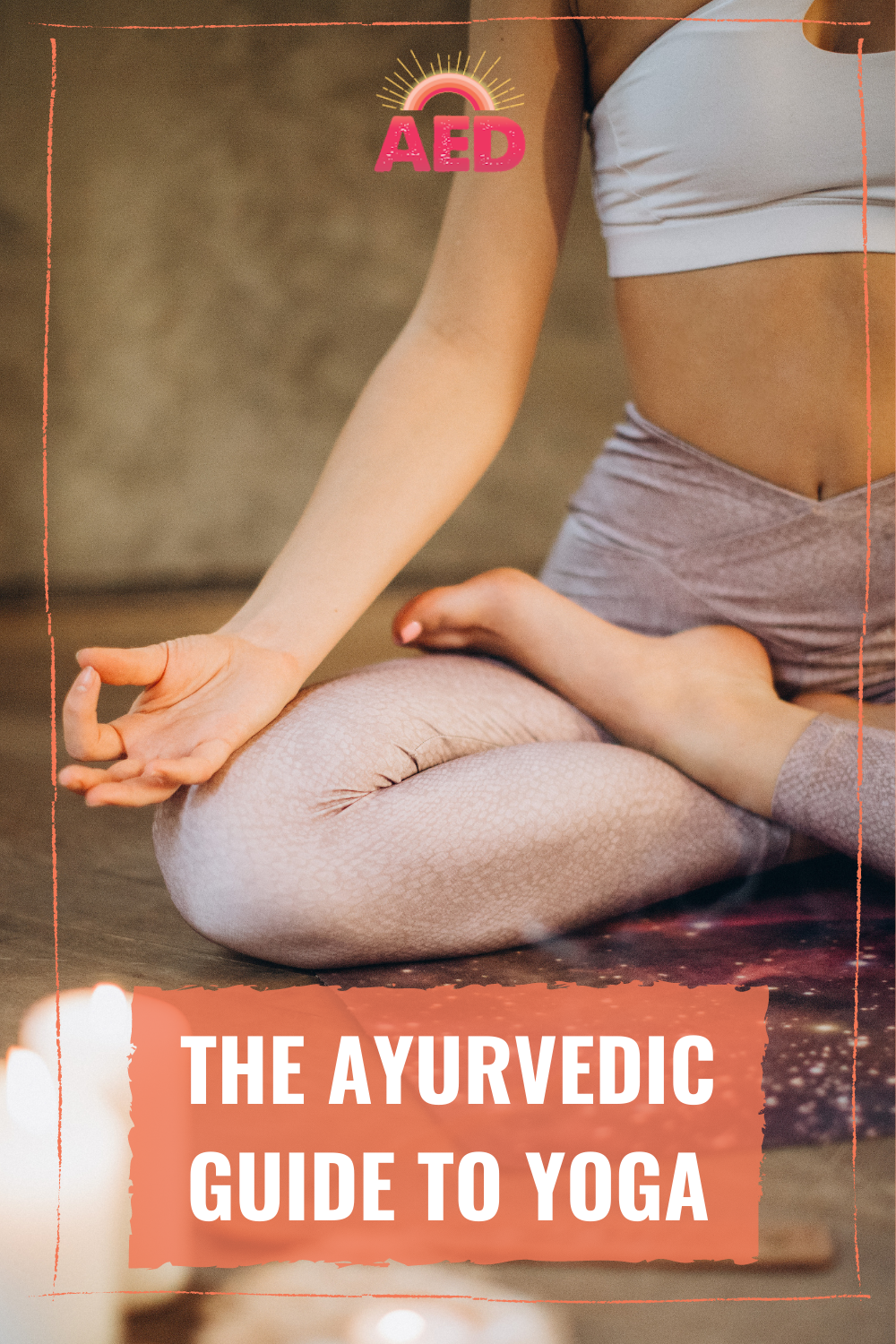
Did you know that you can apply this Ayurveda guide to yoga (and your Ayurvedic blueprint… aka your dosha) to your yoga practice?
Not only is Ayurveda-informed yoga fun, empowering, and beneficial for nourishing your unique body type… It’s also the BEST way to work with yoga long-term and therapeutically – to balance and heal your body-mind-spirit.
Yoga and Ayurveda are sister sciences and together they form the root of yoga therapy.
When done properly, this combo can bring relief to almost any physical, mental, or energetic ailment.
I speak from experience! I’ve been practicing yoga since 1993 (whaaaat?) and started learning Ayurveda in 2001. It was when these two life sciences came together in my life that deep healing really started to happen. So…
This Guide is For You If:
- You’re looking for tools that will bring you more joy, vitality, and resilience.
- You love yoga and want to bring more Ayurvedic wisdom into your practice.
- You’ve been dying to deepen your yoga practice at home, but need help doing it.
- You’re a yoga teacher looking to add to your skillset
- You want to learn how to combine yoga and Ayurveda – to enhance your practice and to share it with others.
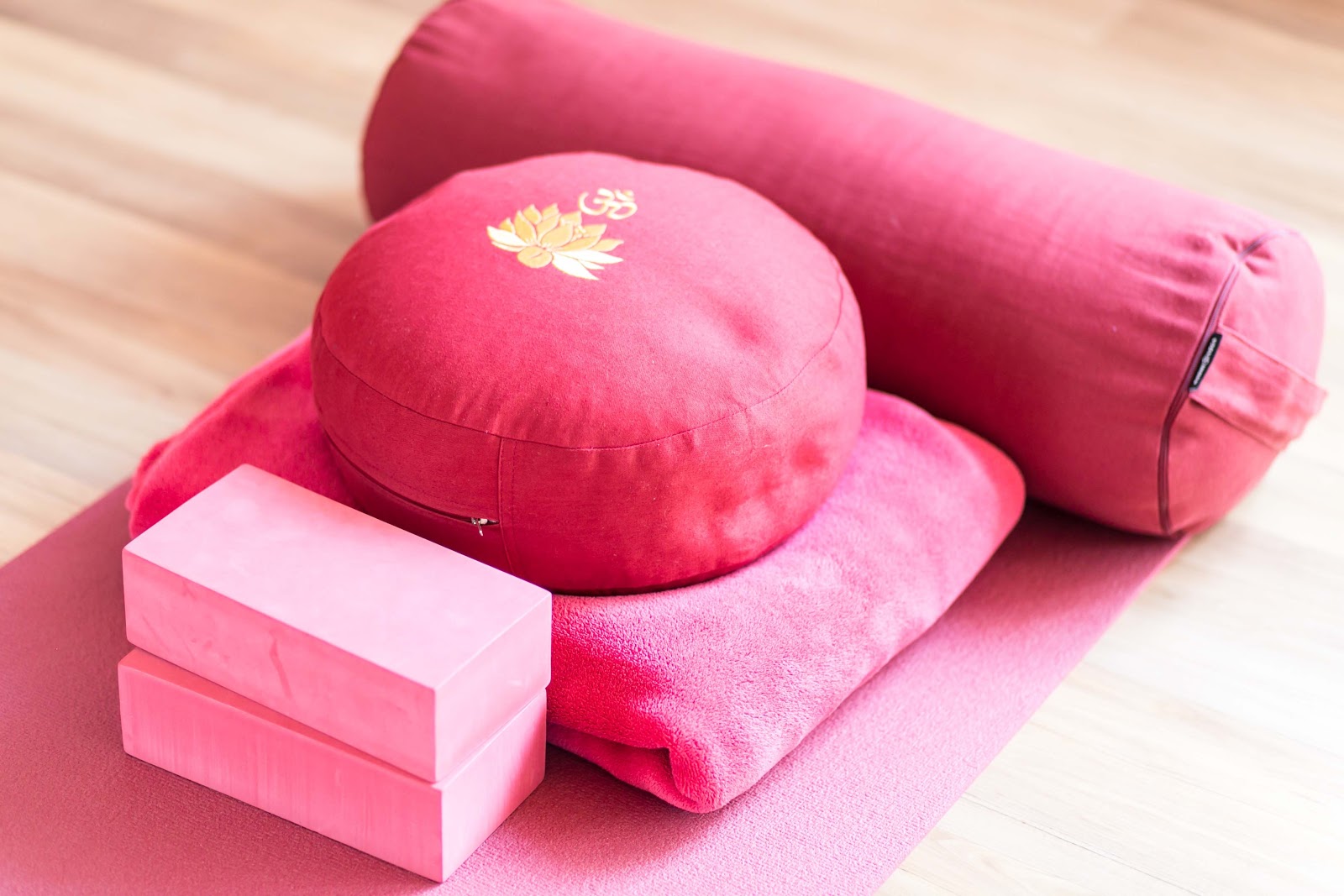
Disclaimer: Yoga is a marathon, not a sprint. When you take ownership of your journey, you will see powerful results that stand the test of time.
It typically takes 3 months of regular practice to correct an imbalance in the body.
While this requires time and patience, I can assure you… it will definitely be worth it!
I’m here for you and you’ve got this!
The First Step
Before you begin your yoga journey, it’s important to “check your weather!”
Knowing your Ayurvedic blueprint will help you understand your body, mind, and spirit… What your body looks and feels like when it’s balanced, as well as what tends to occur when it’s not. Keep reading to get a general idea, but if you’re unsure about your personal blueprint, make sure to take my free dosha quiz to learn more!
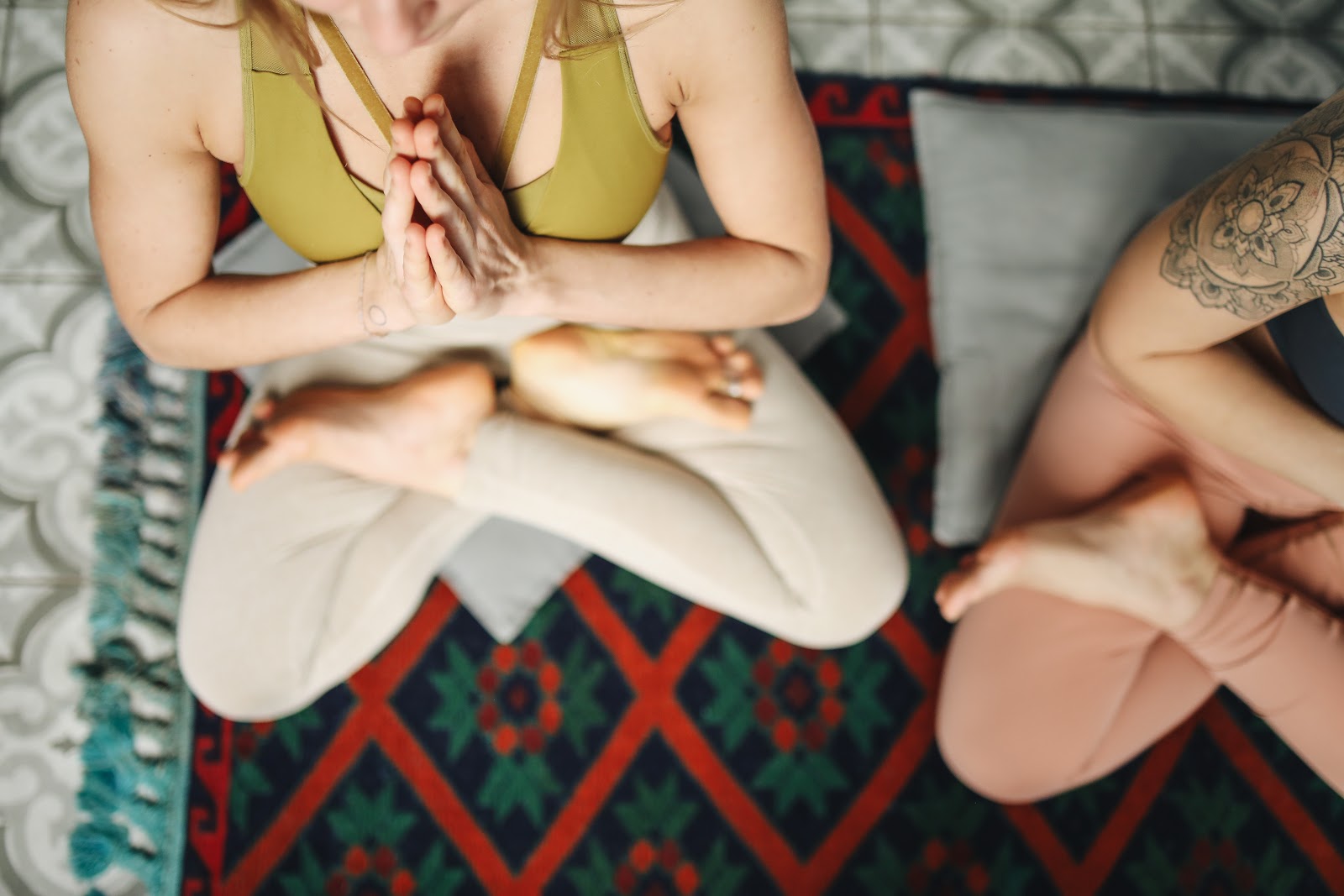
Yoga For Vata Imbalance
The Vata Body
- Runs cold and takes time to warm up
- Dry cracking joints (dryness increases with age)
- Fragile bones
- Pain and stiffness in the lower back
- Long flexible arms and legs
- May tend towards hyper-flexibility
The Vata Mind
- Anxious
- Easily distracted
- Prone to insomnia
- Indecisive
- Overly enthusiastic
- Highly sensitive
- Easily worn out
Therapeutic Yoga Tips For Balancing The Vata Dosha:
- Yoga asanas such as seated and reclined twists help to relieve gas from the lower intestine and tension from the lower back. Twists are medicine for Vata people!
- Forward folds are great for releasing tension and relieving anxiety
- When doing yoga asana, take full even breaths with a focus on the exhale
- Favor long asana holds and repetition
- A successful practice will leave you feeling grounded, flexible, and lubricated in your joints
- Restorative yoga can be incredibly grounding for you

Asanas to try:
- Cat and Cow Pose – slow and steady
- Downward Facing Dog
- Tadasana – Mountain Pose
- Triangle Pose and Revolving Triangle
- Uttanasana – Standing Forward Fold
- Warrior I, II, and III
- Prasarita Padottanasana – Standing Wide-Legged Forward Fold
- Tree Pose
- Child’s Pose
- Janu Sirsasana – Head To Knee Pose
- Paschimottanasana – Seated Forward Fold
- Viparita Karani – Legs Up The Wall
- Savasana – Corpse Pose*
*Pro Tip! Cover your body in blankets so you’re both warm and weighted down. Allow your Savasana to be long-lasting and uninterrupted (In the era of Covid yoga, I just don’t get up at the end of class!) Cover your eyes with an eye pillow or one end of a sandbag. The more you can anchor your body to the earth, the better.
Pranayama For Vata
Alternate Nostril Breathing or Nadhi Shodana will cleanse and purify your nasal passages and your energetic body. This breath practice helps you to feel centered and grounded.
How to do it:
- Using your thumb, seal off your right nostril and inhale through the left nostril.
- Hold at the top of the breath and switch the seal to the left nostril, freeing the right.
- Exhale through your right nostril.
- Hold at the bottom of your exhale.
- Inhale through the right nostril, keeping the left nostril sealed.
- Hold at the top of the breath and switch the seal to the right nostril, freeing the left for the exhale.
- Repeat this at least 5 times to start and gradually go up as you become more comfortable with the practice.
When you feel complete, free both nostrils and sit with your breath to feel the effects of clarity in your mind, body, and spirit.
Vata Meditation Tips
- Find a point of focus, like a spot on the wall, the sound of your breath, or a mantra.
- Meditate on grounding, stabilizing, and rooting into the earth.
- Meditate in a space with minimal distractions.
- Guided meditations are your friend.
Bonus Tip! Strong, slow practices are the most beneficial for Vata; they encourage the earth element to enter Vata’s sphere and produce a sense of presence, rootedness, and self-connection. Iyengar yoga is this Vata girl’s personal jam. But yin yoga, restorative yoga, and any mindful, slow-moving class will benefit you.
All About Yoga For Pitta
The Pitta Body

- Runs hot and overheats easily
- Prone to heartburn, loose stools, and excessive sweating
- Medium build
- Toned and muscular
- Prone to fever and inflammation
- Great at bursts of energy
The Pitta Mind
- Leadership oriented
- Enjoys a challenge
- Easily aggravated
- Competitive
- Prone to burnout or exhaustion
- Courageous
- Willful
Therapeutic Yoga Tips for The Pitta Dosha
- Keep your body cool and relaxed by surrendering to your practice.
- Inhale through your nose and exhale through your mouth to release excess heat from your body.
- Hold your poses for a shorter period of time and take long easy breaths.
- Add more challenging moves to your practice to keep things interesting.
- Cool your body down with wide-legged forward bends and open twists.
- A successful practice will leave you feeling cool, open, and receptive.
Asanas to try:
- Slow and steady Surya Namaskar – Sun Salutations
- Downward Facing Dog
- Urdhva Dandasana – Plank Pose
- Boat Pose
- Salabasana – Locust Pose
- Bhujangasana – Cobra Pose
- Prasarita Padottanasana – Wide-Legged Standing Forward Bend
- Side Angle Pose
- Parigasana – Gate Pose
- Sirsasana – Headstand
- Sarvangasana – Shoulderstand
- Halasana – Plow Pose
- Paschimottanasana – Seated Forward Bend
- Tortoise Pose
- Upavista Konasana – Wide-Legged Seated Forward Bend
- Viparita Karani – Legs Up The Wall
Pranayama For Pitta
Sitali Breathing is a cooling breath control practice that allows Pitta dominant people to cool the body down and chill the mind from the inside out.
How to Do it:
- Curl your tongue and breathe in as if you were sucking in air through a straw.
- Breath slowly with control, counting to 5 on the inhale.
- Hold at the top of the breath for a count of 3
- Keeping tongue curled, exhale for a count of 5.
- Hold at the bottom of the exhale for a count of 3
- Repeat.
Try increasing your count exponentially as you continue to breathe, going up one number each time.
When you feel complete, sit in normal breath and notice the cooling effects.
Pitta Meditation Tips
- Focus on cooling the mind.
- Embrace imperfection as a practice.
- If judgment, criticism, or passionate thoughts distract you, try to allow them to flow through you without responding,
Bonus Tip! It’s so important for Pitta peeps to connect to their bodies. Slow, flowing, yet challenging practices are most beneficial for Pitta; they encourage the air and water element to enter Pitta’s world and induce a sense of cool, calm, fluid self-expression. Plus, you still get to break a sweat!
Yoga For Kapha Imbalance
The Kapha Body
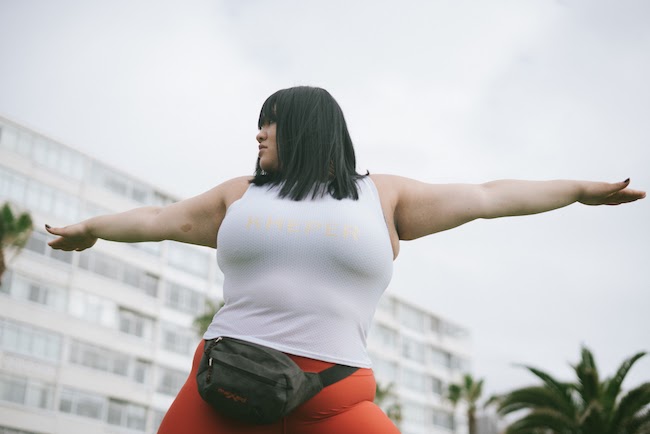
- Prone to congestion
- May suffer from lethargy
- Can lack motivation
- Thick, sturdy, and curvy
- Strong bones
- Blessed with endurance and stamina
- Prone to bloating and sluggish digestion
The Kapha Mind
- Holds on to heavy emotions
- May lack motivation
- Even-keeled
- Calm, cool, and collected
- Loving and compassionate
- Easily stabilized
Therapeutic Yoga Tips For Balancing The Kapha Dosha
- Incorporate Ujjayi breathing into your practice – it will boost your energy.
- Focus on your powerful strength and endurance.
- Turn your gaze upward while practicing – it will increase your energy.
- A successful practice will help you balance out your weight, and leave you feeling clear and blissfully detached
Asanas to try:
- Sun Salutations
- Virabhadrasana I – Warrior I
- Virabhadrasana III – Warrior III
- Downward Facing Dog
- Upward Facing Dog
- Vasisthasana – Side Plank Pose
- Sirsasana – Headstand
- Sarvangasana – Shoulderstand
- Bhujangasana – Cobra Pose
- Salabasana – Locust Pose
- Dhanurasana – Bow Pose
- Ustrasana – Camel Pose
- Urdhva Dhanurasana – Wheel Pose
- Supported Setu Bandha Sarvangasana – Bridge Pose
Pranayama Practice for Kapha
Ujjayi Breath, which is a circulating breathing practice – considered to be more heating. It’s great for Kapha types!
It can be used to help you fuel your practice in moments of stagnation.
How to do it:
- Breathe in through the nose and as you exhale, breathe out as though you are fogging up a mirror. You should be able to hear yourself breathe out.
- Notice the slight tightening of your throat as you breathe out.
- Keeping this pressure in the throat, close your mouth and inhale through the nostrils
- On your exhale, keep your mouth closed, still breathing as if you are fogging up a mirror. (You should sound a bit like Darth Vader!)
- Breath deeply into your belly.
- Repeat this breath for about 10 cycles before you begin your practice and try to continue as you flow.
If you lose your breath during your practice, pause for a moment and then do your best to pick it back up.
Kapha Meditation Tips
Try moving meditation.
- Set the intention to take a walk and clear your mind.
- Practice watching your thoughts move past you like a cloud. This will help you to detach from heavy thoughts that you typically hold on to.
- Make moving meditation part of your yoga practice on the mat. Connect to your breath and move with the inhale and exhale.
Bonus Tip! Energized and vigorous yoga practices are favorable for Kapha; they encourage the air and fire elements to warm up Kapha’s core and bring more motivation and creativity into being.
A Holistic Approach to Healing
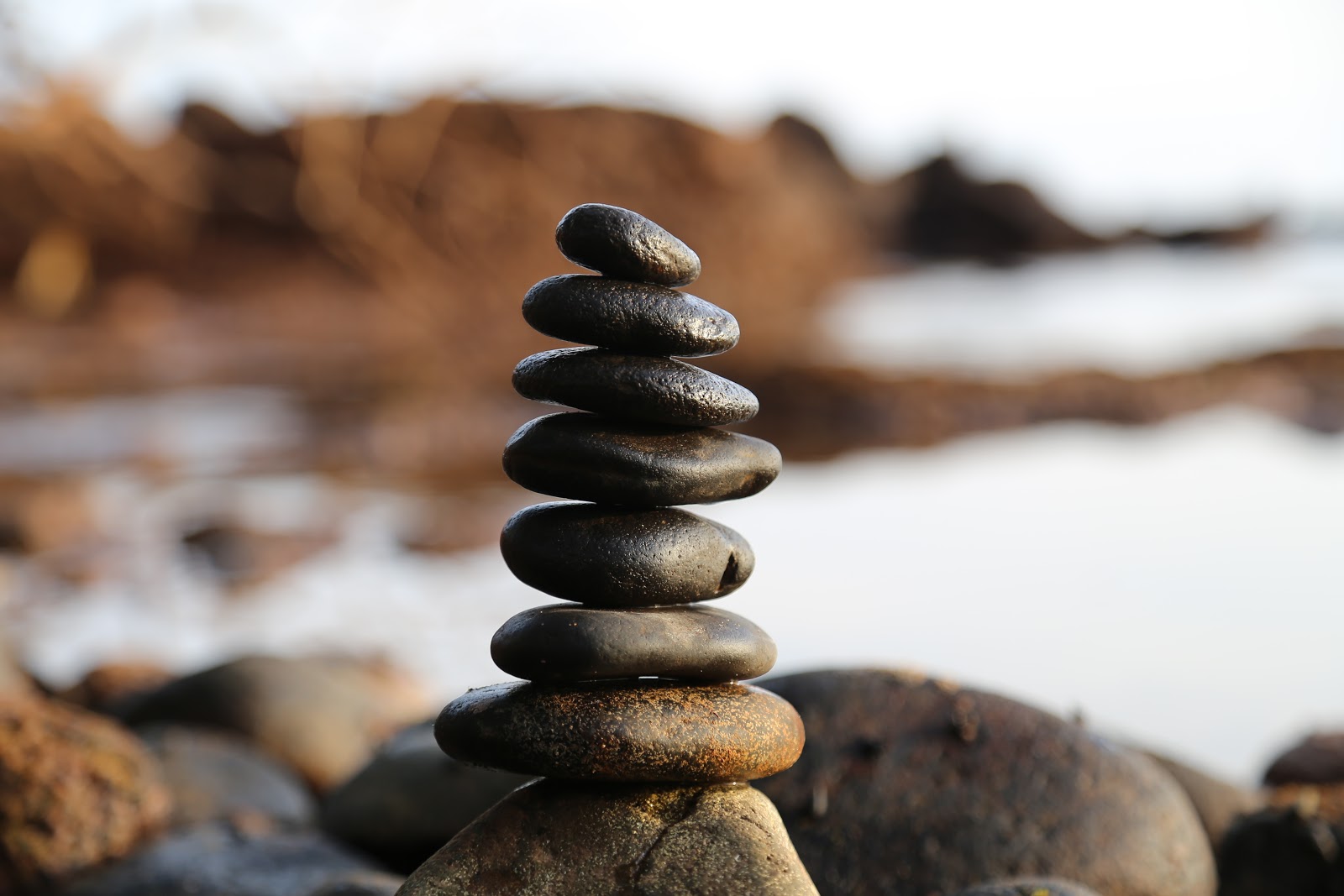
Make Sure to pair your Ayurvedic yoga practice with proper eating and lifestyle practices for an overall holistic effect!
Ready to check your Ayurvedic weather inside and out?
Check out my online Ayurvedic Yoga Immersion Training! It’s filled with guided Ayurvedic yoga practices and meditations to assist you on your journey and help you feel your very best – on demand!


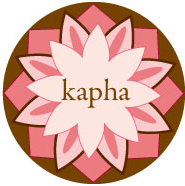
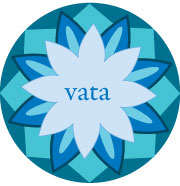
This is a fabulous resource, and a beautifully written article. Thank you for sharing!